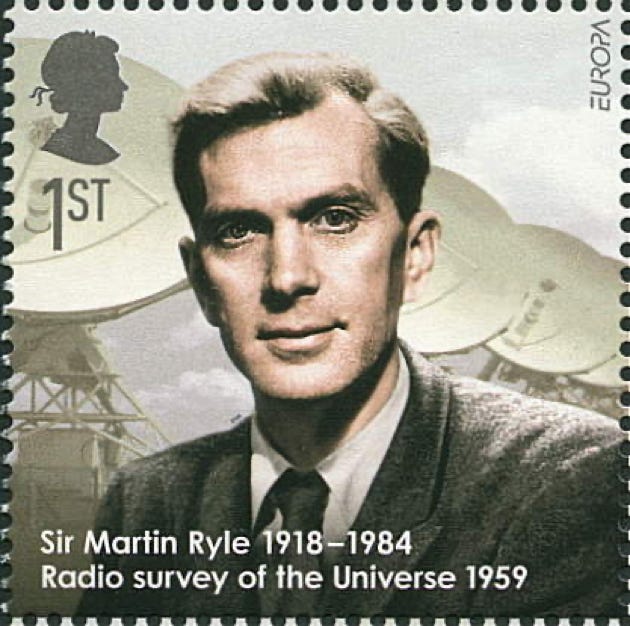2009 International Year of Astronomy
The International Year of Astronomy in 2009 commemorated the 400th anniversary of the first use of an astronomical telescope by the Italian scientist Galileo Galilei, who saw among other wonders the craters of the Moon, the satellites of Jupiter, and sunspots. England celebrated the achievements of Thomas Harriot, an Englishman who beat Galileo by several months but remains much less well known.
In recognition of the IYA, Astronomy was the theme of the 2009 Europa stamps issued by the members of PostEurop, the trade association of European public postal operators which succeeded the European Conference of Postal and Telecommunications Administrations (CEPT) in 1993.
Martin Ryle (GB)
Royal Mail’s contribution to the Europa theme of Astronomy was a stamp showing the British radio astronomer Sir Martin Ryle (1918–84), Nobel Prize winner and originator of the technique of aperture synthesis in which several radio dishes are ganged together to produce the resolution of one much larger one. The Ryle stamp was one in a set of ten titled Eminent Britons issued in 2009 October; it was the only one that was actually a Europa stamp (denoted by the distinctive ‘Europa’ lettering at its upper right). For information on the rest of the Eminent Britons set see here.
At the foot of the Ryle stamp is the wording ‘Radio survey of the Universe 1959’. This refers to the Third Cambridge Catalogue of Radio Sources, a pioneering and influential survey of the northern radio sky. Objects listed in that catalogue bear 3C numbers and many of the brightest objects in the radio sky are still known by those numbers, such as 3C 273, the brightest quasar. Behind Ryle can be seen four antennae of the Ryle Telescope at Cambridge, an eight-element aperture synthesis instrument opened in 1972 and named after him in 1989. Ryle served as Astronomer Royal from 1972 to 1982.
The Royal Mail had toyed with the idea of portraying Thomas Harriot in the Eminent Britons set but decided against it, probably because of the lack of an authentic portrait. Part of Harriot’s Moon map did appear on the border of the Journey to the Moon commemorative sheet issued by Royal Mail in 2009 July.
For stamps of other nations honouring Ryle, see here.
Stanley Gibbons no. 2980
